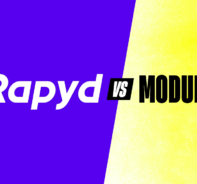The Power of Local Payments In A Global Market
Table of Contents
- The Power of Local Payments In A Global Market
- eCommerce Continues Its Explosive Growth Around The World
- Local Payment Methods Give Shoppers Options
- Four payment methods to utilize to increase conversion rates:
- Be Clear About Shipping And Return Information
- Fewer Form Fields Create More Conversion Opportunities
- Follow The Cross Border Checkout Checklist
- Ready for a Deeper Dive?
eCommerce isn’t just becoming more global, it’s also becoming more local than ever before. Your company’s website is an essential place to both localize the shopping experience and optimize the checkout process to remove friction from cross-border payments.
More and more online shoppers are expecting a localized experience on your website. That includes everything from translating content into the local language to presenting prices in local currency, and, of course, accepting international payments. While localizing your website to include these features is an essential step in your international ecommerce strategy, optimizing your checkout process is one of the most important factors in expanding cross-border sales.
eCommerce Continues Its Explosive Growth Around The World
Thanks to increasing Internet access, expanding worldwide logistics and an ongoing trend toward digital commerce, which has only been accelerated by the global pandemic, ecommerce continues to grow rapidly.
China recently surpassed the US in ecommerce volume and Southeast Asia, India, the Middle East and Africa are all experiencing dramatic ecommerce growth. In fact, 74% of ecommerce will be non-western by 2023 and 57% of online buyers are already purchasing cross border today.
eCommerce executives are taking note of that growth with 87% saying cross-border sales are critical to their company’s success. Yet only 35% of those executives feel their business is prepared to handle cross-border payments.(2) That gap can be filled by rethinking your checkout process. Specifically, three essential pieces of the checkout puzzle: local payment options, shipping concerns and reducing friction by optimizing form fields.
Local Payment Methods Give Shoppers Options
The first step in revamping the international checkout process is implementing local payment methods. This is about more than accepting a few popular payment services like PayPal, Google Pay or Alipay, it’s about offering a variety of locally-relevant payment types shoppers know and trust.
Four payment methods to utilize to increase conversion rates:
-
- Cash: Cash remains the number one payment method across the globe and implementing a cash acceptance flow with a barcode, QR code or voucher that can be used to make cash payment for a digital purchase at a local convenience store can be as easy as adding digital payment methods.
- Bank Transfers: Many shoppers prefer to use a bank transfer for payment because it is a trusted and secure way to pay.
- Local and International Cards: Credit cards remain popular worldwide but even if the shopper has a Visa or Mastercard it may not be eligible for a cross-border payment. Working with a local processing entity can ensure your international site or app can accept local cards.
- Local eWallets: The popularity of digital wallets is growing around the world. They offer a streamlined checkout experience. They also give merchants the ability to create discount and reward programs, and they are accessible to online shoppers even if they do not have a credit card or, in some cases, a bank account.

Want to Learn More? Forrester Research Points the Way Forward
Download the 2020 Report:Playbook for the New Era of Digital Commerce
Be Clear About Shipping And Return Information
The second element to consider is adequately addressing your customers’ shipping and return questions and concerns. During checkout, it’s important to clearly present information about delivery charges, shipping times, applicable taxes or fees and return policy before the customer makes a purchase.
Shoppers also value free delivery and a reliable return process. If possible, it’s always a good idea to offer alternative delivery options such as package facility dropoff, locker facility or place of employment. In many places around the world it’s not possible to leave a package on a doorstep and providing alternatives goes a long way in converting cross border purchases.
Fewer Form Fields Create More Conversion Opportunities
The third and final way to improve your website’s checkout process and increase cross-border sale conversion is optimizing form fields. Retailers often have overly complicated checkout processes with everything from too many form fields to a lack of browser autofill capabilities to asking users to repeat information. When the work of completing too many form fields and inputting too much information becomes a burden, shoppers often abandon the checkout process. Reducing form friction increases cross-border sales by making the process simple and straightforward.
The best way to do that is with an easy three-step checkout consisting of:
1) Delivery fields
2) Payment fields
3) Order review
The fewer forms shoppers need to complete to make a cross border payment, the greater your conversion gains.
Follow The Cross Border Checkout Checklist
Growing your business’ cross-border sales is all about being in tune with your shoppers wants and needs. There’s no place this comes into play more than in the checkout process. By implementing locally preferred methods for cross-border payments, adequately addressing shipping and delivery concerns and optimizing form fields, you’ll experience better conversion rates, expanded reach, more customer loyalty and sales growth.
Ready for a Deeper Dive?
Download the Report: Playbook for the New Era of Digital Commerce
Sources:
1. The Local Checkout Experience, An eCommerce Blueprint for Increased Cross-Border Sales
2. Visa Global Merchant eCommerce Study, http://mms.businesswire.com
Subscribe Via Email
Thank You!
You’ve Been Subscribed.



